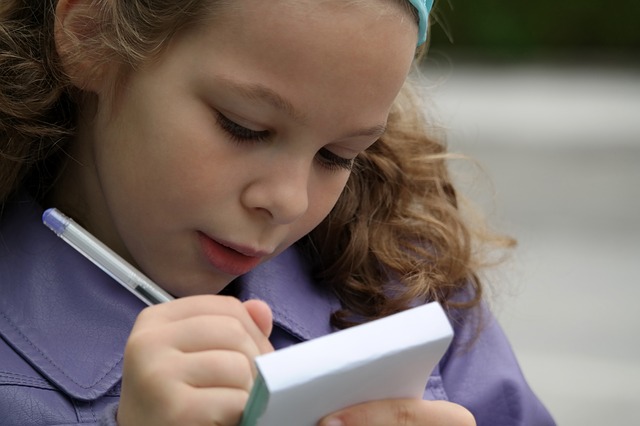Guest post from Jamie Strand of Scicamps.org

Photo from Pixabay
3 Fun Lesson Plans for Kids Who Love Science
When parents foster a love of science in their children, they grow up observing, questioning, experimenting, thinking critically, and reasoning. These kids love to hypothesize, figure out why things work the way they do, and experiment while playing. Sometimes, it is more difficult to teach science to kids who already love it because they know so much about it. The basics won’t cut it with these kids because they already have a good understanding of fundamental science concepts. That’s why it is important to use fun, unexpected science lessons with kids who love science. Here are a few options:
1. Construct a Bird’s Nest
Most kids have peered up into the branches of a tree and seen a bird’s nest, but they may not realize just how much work the construction of one requires. Having them construct their own is a fun way to experiment, explore building materials, and gain insight into the amazing world of birds to appreciate some of nature’s most clever builders!
Start by going on a nature walk in a wooded area to get a real look at birds’ nests up close, being mindful not to touch or disturb them. Look closely and make a list of all the materials you observe: twigs, straw, leaves, grass, etc. Look out for any man-made materials — birds often use newspaper and stray pieces of cotton or cloth they’ve found to cozy up their homes.
Next, have the kids gather the kinds of materials they saw used in nests during the nature walk. Make sure there are enough supplies for everyone to build. Don’t forget a small bucket of mud to help hold the pieces together!
Head inside and give everyone workspace protected with newspaper. Have the kids use the materials to construct their own bird’s nest. Help them test to ensure they’re sturdy and hold together. Test them out by placing them outside in tree branches, a hidden corner of the fence, or anywhere else they think a bird may want to call home. Discuss what materials made the strongest nests, what extra substances they added for insulation or camouflage, and all the trials and error involved in the process.
2. Dancing Oobleck
Kids may understand the three states of matter: gas, liquid, and solid. But, they may not realize that there is a strange fluid, called Oobleck, which is a solid and a liquid. You’ll begin by making thick Oobleck with two cups of cornstarch and one cup of water. Allow kids to play with the Oobleck for a bit to realize that when it relaxes it is a liquid, but when they push on it or move it quickly it becomes a solid.
Now is a good time to talk about why the Oobleck changes its state; it is a pressure-dependent substance, like quicksand, that is a liquid when it moves slowly because the cornstarch particles have time to separate but a solid when it moves quickly because the particles are forced together.
To begin the Dancing Oobleck experiment, you’ll need a subwoofer, a thin metal cookie sheet with sides, an MP3 of an audio test tone, and food coloring. Place the cookie sheet onto the subwoofer’s speaker and pour in the Oobleck. Search online for Subwoofer test MP3s. Experiment with various tones to see which works best, and be prepared to turn the volume up fairly high. (The three frequencies that typically work the best are 40Hz, 50 Hz, and 63 Hz.) Kids should make observations of the Oobleck at each frequency.
If you don’t mind a bit of a mess, or stained kids’ fingers, allow kids to add a few dots of food coloring to the Oobleck and test the frequencies again. It is fun to see how the colors mix and it helps kids visualize the ways in which the Oobleck moves by watching the colors mix and form shapes.
3. A Day in the Life of…
There are all kinds of science careers that revolve around animals, but do your kids know about their options?
Have a discussion about different animal-related fields and careers, covering everything from veterinarians, zoologists, marine biologists, animal trainers, and animal behaviorists. Let each child pick their favorite career, then write a “Day in the life” story. They can research it online, in books, or even interview someone in the field. (If you can swing guest speakers for most or all of the careers, even better!)
After they’ve written their stories, ask them to present to them. Have them explain why they chose that career and then read their story aloud. Would they interact with animals directly? What kind of skills are required? Did the research live up to the initial idea they had of the career, or was it different?
Building a bird’s nest, dancing Oobleck, and picking animal-based careers are just a few lessons that will excite kids who love science. Challenging kids who love science with lessons and experiments like these, which take their assumptions and basic knowledge to the next level, is a great way to get them to love science even more.
Jamie Strand loved being homeschooled. Today, he teaches at a local community college. He created SciCamps.org with a friend in order to make it easier for kids throughout the U.S. to find science and math camps in their area. In addition to teaching, Jamie loves spending time with his wife and young daughters.




